Reference : Azimut #35193
Announced for a long while by MR Models, this conversion designed for the Heller kit is finally issued under Azimut brand thanks to a joint venture between the both kit makers.
It comes in a black thin cardboard box as usual with Azimut.
The upper hull is wrapped in bubble air wrap plastic whereas the other parts
come in 5 re-sealable bags.
The kit comprises 171 parts in a light grey resin, 7 photoetched (PE) parts, 1 white metal part,
one metal
cable and a 5-sheet instructions leaflet.
The carving is of a high standard and the detail is excellent. The cast is of top quality too and shows nearly no flaws. There are very few air bubbles, the only one on my model were on the upper hull and will be easy to fill. The pour stubs are cleverly located and won't require too much preparation work. On my model, the upper hull and the lower hull front bow were slightly warped which will be fixed with a hair-dryer to enable a perfect fit.
The black and white notice comes in the Azimut usual standard
and shows drawings from the Heller original notice. On the first sheet, there
are pictures of the complete model as well as technical drawings with vehicle
measurements. Unfortunately, the printing quality doesn't allow a good viewing
of the pictures. The building part comprises 14 steps and begins with the
modifications to make to the donor kit and the running gear assembly. Then the
upper hull is detailed in the steps 2 to 8. The steps 8 and 9 concern the front
blade and the winch. The crane is covered in the steps 11 to 14.
The lack of numbering of the parts will require a thorough identification prior
to starting the building to avoid any mistakes.
The chassis
Apart the front bow modified to accommodate the blade and a winch, the chassis is the donor kit one. The sides must be cut as well as the hull front according to the instructions. This will be the only major work to do on the donor kit but it should be perfectly done if you don't want to get gaps between both hull halves.
The upper hull
It comes as a single piece with the locating parts or holes
necessary to the correct gluing of the numerous parts. Apart from the
headlights, the smoke dischargers, the spare track links, the radio operator
hatch and the TC cupola, the other Heller parts won't be used. The Heller parts
fit perfectly.
At the step 2, the crescent-shaped hooks and the towing hook at located far to
the rear. At the step 3, Azimut has forgotten to give the proper directions to
bend the white metal part representing the APU bracket.
The various winch will be fitted with your own thread. Azimut provides a driver
windshield cover. The glasses should be hollowed and replaced by clear plastic.
On the real vehicle, this accessory is rarely seen.
The PE parts are essentially designed as bins mesh. The one at the back will be
bent sing the side parts as templates. The bin Azimut mentions as optional is
present on all the vehicle I was able to see.
The front blade and the crane
The blade is covered by 2 steps and is quite complex. The main part is cast as a single part with nice ribs on its back. Azimut provides 3 drawings showing the various positions of the blade during winch or crane operations.
The crane arm is remarkably cast as a single piece as well
and the inner sides benefit of the same level of detail and carving as the
exterior. As often with that kind of vehicle, the cable lay-out will be the more
delicate step to achieve. Azimut gives a drawing to ease this process but
curiously does not provide the pulleys axis.
The crane elevation may be adjusted by shortening the jack. It is also possible
to represent the crane during heavy crane duty thanks to the 2 supports which
can be stowed on the arm right side.
At the step 13, 2 flat parts should be glued at the end of the arm but the
directions are not clear enough to do so. The various pictures I checked did not
help clearing their location.
As often, Azimut doesn't give any decoration nor camouflage scheme. However, your servant's site is mentioned in the instructions for further references.
As a conclusion, this conversion, firstly released during the April 2006 Paris modeling show, after having long been waited, is particularly welcome and will certainly delight those liking the models out of the ordinary paths.

|
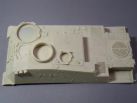
|
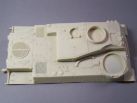
|

|
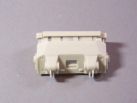
|
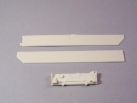
|
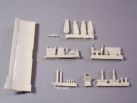
|
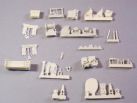
|
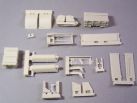
|
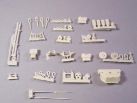
|
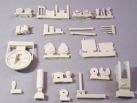
|
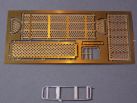
|
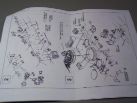
|
||